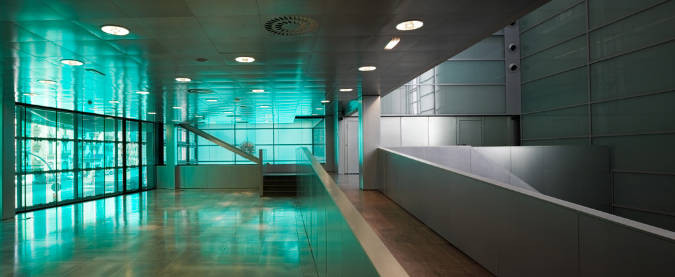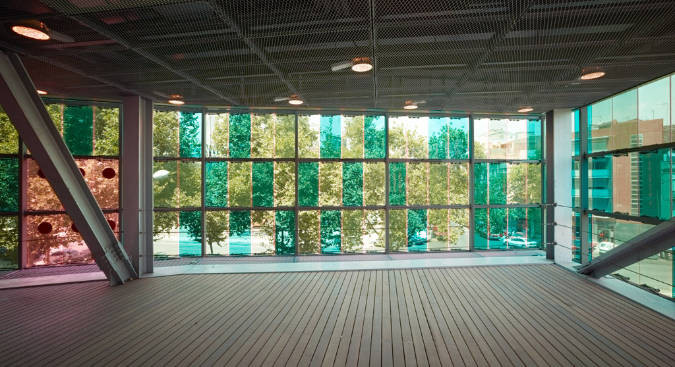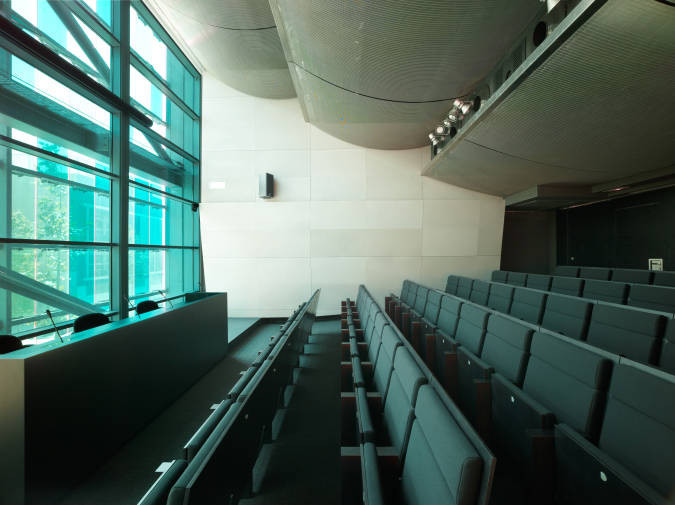
in this “daylight series” first post we would like to talk about colour application in transparent facades.
by walking through the famous 22 @ district of barcelona we find this building, gaes headquarters.
it is characterized by a grid of adjustable glass slats, with filters in different shades of green.
second skin glass facades tend to be complex on a technical, budgetary and maintenance level.
many of them are found in large cities, as well as in business areas, as a symbol of architectural and technological evolution.
when talking about facades, we might tend to think just about an outdoor element.
however, certain decisions made on them may have repercussions on its indoors and on its users.
characteristics such as reflections, radiation and transparency, that the mentioned material implies, must be taken into account.
therefore, a glass facade is more closely related to the indoors of its building than a conventional one, made of different materials and with indistinct openings.
furthermore, depending on their orientation, the use of colour filters affects indoor spaces with more or less notoriety.
indoor spaces would be visibly tinted by the incidence of the sun facing the south.
in a north facade this phenomenon would not be so noticeable .
however, from users point of view, their sorroundings would be indisputably conditioned by the colour applied.
consequently, the environment also comes into play.
we should ask ourselves the following question: in this area, do we want to deprive the user of views by conditioning their perception?
likewise, space distribution and its different uses must be strategically planned, taking into account the light transition.
we must consider future users and understand the path they are going to follow through the building.
to do so, we need to think about the amount of daylight they are receiving, and throughout the day.
in other words, transitions from “colourless” to visibly tinted daylight must be considered.

gaes headquarters 
http://barcelona.b-guided.com/noticias/b-ing/sede-de-gaes-mizien-arquitectos-238.html 
gaes headquarters
in fact, the incidence of colour in our vision during a certain period of time can produce damaging effects if it is not properly controlled.
in workspaces, for instance, it could cause fatigue and, consequently, a decrease in employees’ performance.
with no doubt, such example has helped us to reflect more about tinted glass facades.
we will get deeper within the topic in future posts with other remarcable buildings!
*for more information about this particular building follow mizien arquitectura



